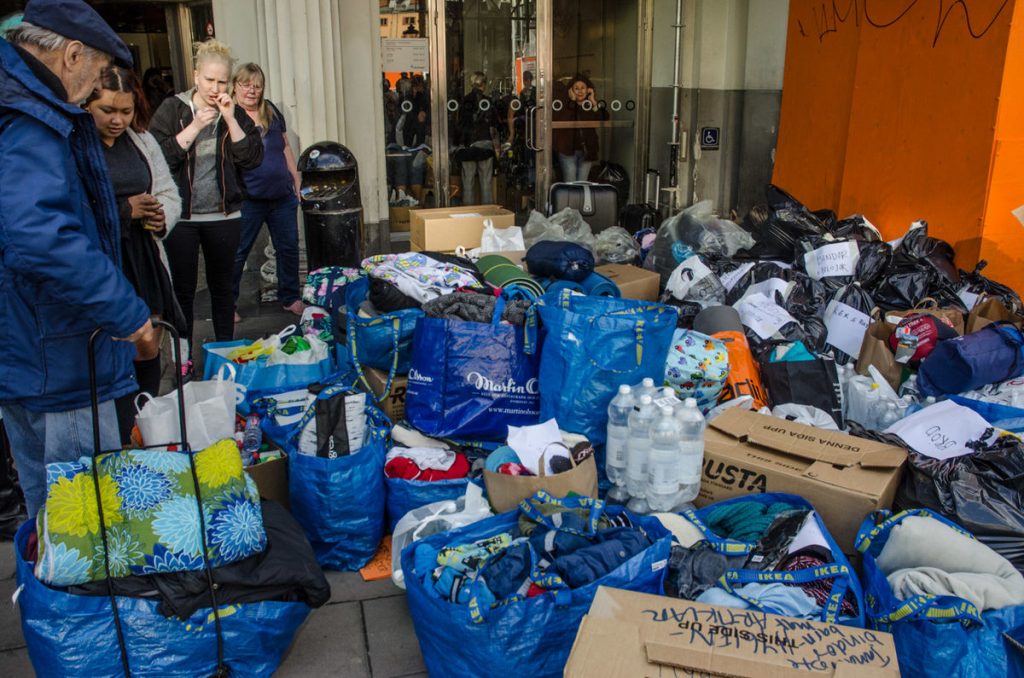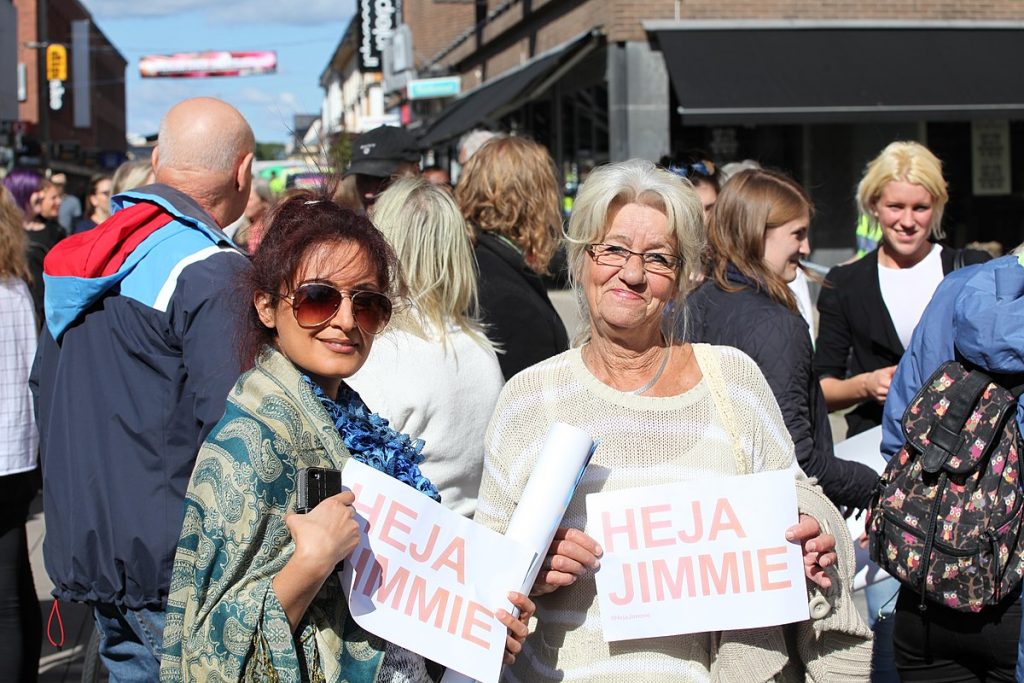Empathy as National Identity: Lessons from Sweden for Germany (April)
In April 2019, the Rights Writers discussed the role of advocacy groups and social movements in promoting human rights and social justice in their area.
“It is a serious situation,” German politician Michael Richter told press in July 2015, “but I am not frightened or intimidated.” Richter, a steadfast supporter of migrant asylum and then-leader of Die Linke’s (a populist, socialist party whose German name means “The Left”) caucus on the Freital city council, made this response to a right-wing attack which exploded his parked car. Troubling nationalist sentiment has certainly taken root in Germany in the past decade, but progressive critics continue to parallel its rise. Die Linke and the rest of the German left have reliably championed migrants’ rights – it is telling that four years after his car’s bombing, Richter’s Twitter indicates that, still active in politics, he has ascended to the rank of Kreisgeschäftsführer, a county executive. Still, migrant advocates in Germany have much to learn from comparative perspective. Sweden, in particular, a nation which earned the nickname “the most open country in the world” for its welcoming culture, offers an admirable assimilation infrastructure – but the alt-right’s recent rise there underscores the strain refugee influxes can apply to even the most steadfast hospitality.
Though both countries face the same obligations to asylum-seekers under central EU documents like the Universal Declaration of Human Rights, the Convention on Human Rights, and the Refugee Convention, Sweden demonstrates more positive sentiment towards refugees and takes in more migrants per capita than Germany – in 2014, 5700 asylum-seekers per million Swedish, to Germany’s 1337. (Both countries, however, far exceed the median number of refugee acceptances throughout Europe.) Par Frohnert, a Swedish historian of refugee policy, writes that Sweden’s extraordinary welcoming nature originated in 1942, when it abandoned its traditional homogeneity to accept Norwegians fleeing Nazi persecution, and has continued – with Estonians and Danish Jews towards the close of the war, Iranians and Somalis in the 1980s, and Bosnians in the 1990s – ever since. Hospitality became a badge of honor, a signifier of moral integrity, for the small nation. Today, a bureaucracy which Foreign Affairs reporter James Traub termed “remarkably calm and quiet” welcomes migrants, then grants them access to free food, healthcare, and quality Swedish lessons. Organizations like Refugees Welcome Sweden and The Welcome Movement support governmental efforts by pairing migrants with Swedes who help them integrate into Swedish society. This efficient welfare state reliably produces excellent migrant outcomes: a 2017 survey voted Sweden the world’s best country for immigrants.

What differs between Sweden, then, and Germany, where Angela Merkel has staked her chancellorship on refugee issues and, though their political toll has been heavy, stands by her inclusive policies? The political landscapes of each country are similar, with large centrist parties (Merkel’s CDU, the Social Democrats in Sweden, et al.) advocating for inclusive immigration while facing continued challenges from the right (the Alternative for Germany and Sweden Democrats). Leftist parties like the Marxist Vänsterpartiet in Sweden mirror equivalents in Germany: the Social Democratic Party, which has opposed efforts to roll back Merkel’s decisions; the Green Party, whose commitment to addressing climate change as a driver for migration has found an eager audience in German youth; and Die Linke, which, broadly skeptical of borders, envisions a future where “No one is illegal.” As in Sweden, humanitarian organizations, most prominently Human Rights Watch, the International Organization for Migration, and the United Nations High Commissioner for Refugees, have fought for migrants’ rights to physical safety and freedom from religious persecution. Though Germany’s bureaucracy has proven poorer than Sweden’s at processing refugees, a new crop of charities has sped assimilation by teaching migrants skills, such as design trades, art-museum docenting, and programming, likely to boost their economic power. The advantages which set Sweden’s hospitality above Germany’s (and far above other European nations which have no Holocausts to atone for) seem, then, to be cultural and entrenched, producing disparities in bureaucratic efficiency – Sweden’s refugee processing is so good, it seems, because it remains a priority – rather than arising from them. Though it’s likely impossible to teach acceptance at a national level, Germany may make progress by continuing to combat Islamophobic, anti-refugee rhetoric, per Merkel’s example, and by further improving its administrative processes.
Though Sweden’s example is admirable, its expanded welcome in the wake of the Syrian Civil War has not come without consequences. As welcome committees served greater and greater numbers of refugees cinnamon buns and offered them comfortable couches, costs within the system shot up and threatened existing social-service funds, forcing Sweden to tighten entry requirements and pare back provisions for reunifying migrant families. More disturbingly, the far-right Sweden Democrats (SD), who only recently rebranded away from their Neo-Nazi beginnings, have exploited latent resentment of migrants for their own gain, rising from electoral insignificance to poll at around 20% by early 2016. Centrist Swedes have struggled to determine best responses to this savvy party, which has cut ties with its radical youth wing to avoid appearing openly fascist and convinced media outlets against labeling it as discriminatory. Rather than allow the SD’s proposals to become mainstream, Swedish Social Democrats and other leftists should continue to condemn xenophobia, as they have done reliably in the past. Additionally, they should continue to encourage other Western nations to lighten the logistical and financial burden such a large quantity of migrants places on Swedish systems.

One lesson is clear from the commonalities between Swedish and German policy. Though countries vary in the strength of their infrastructure and accepting cultures form effective institutions, major refugee influxes may still strain popular generosity to its breaking point. It may be too late to completely undo the xenophobia recent tensions have wrought in Germany and Sweden, but the world must learn for the future that taking in the most vulnerable peoples is a responsibility we all share.
